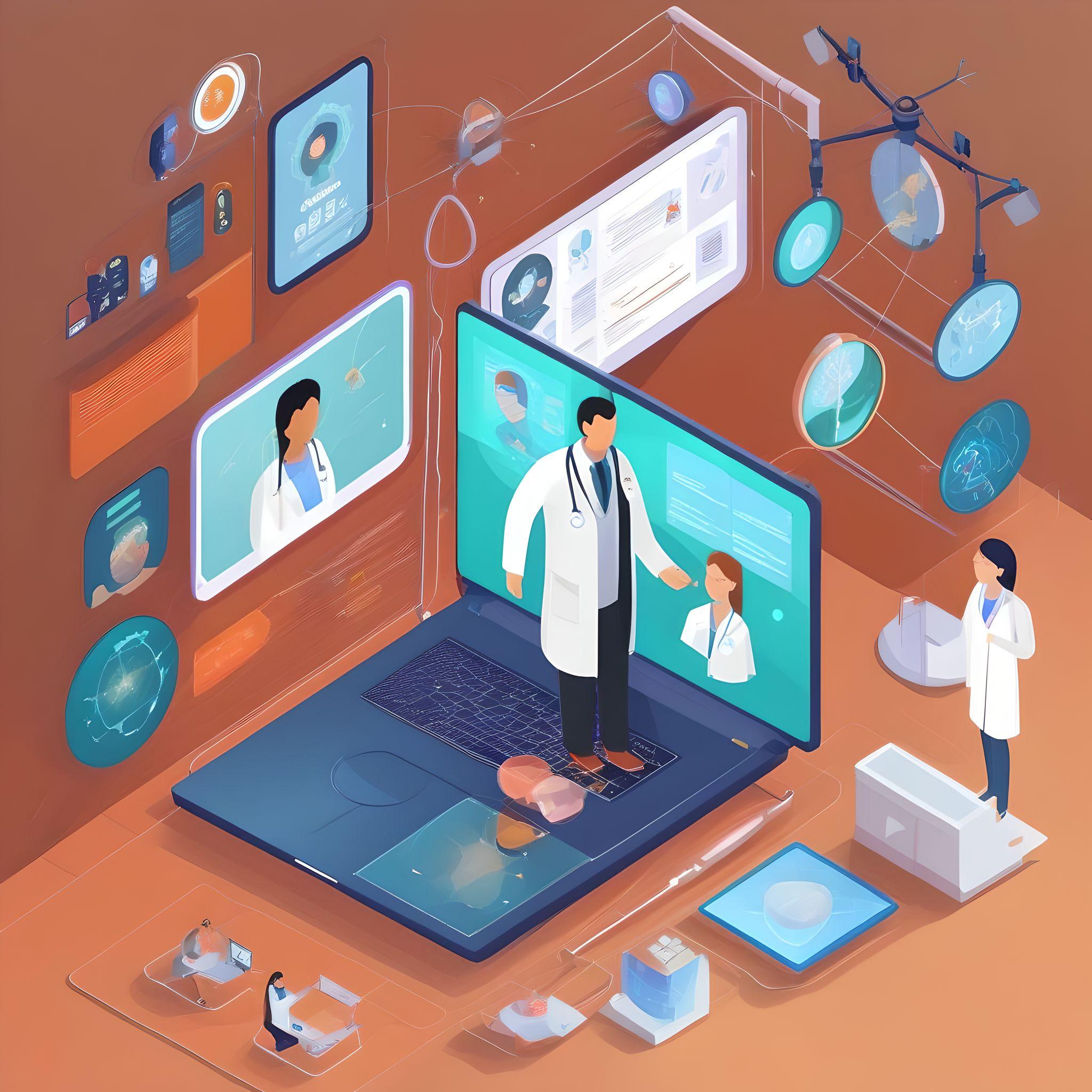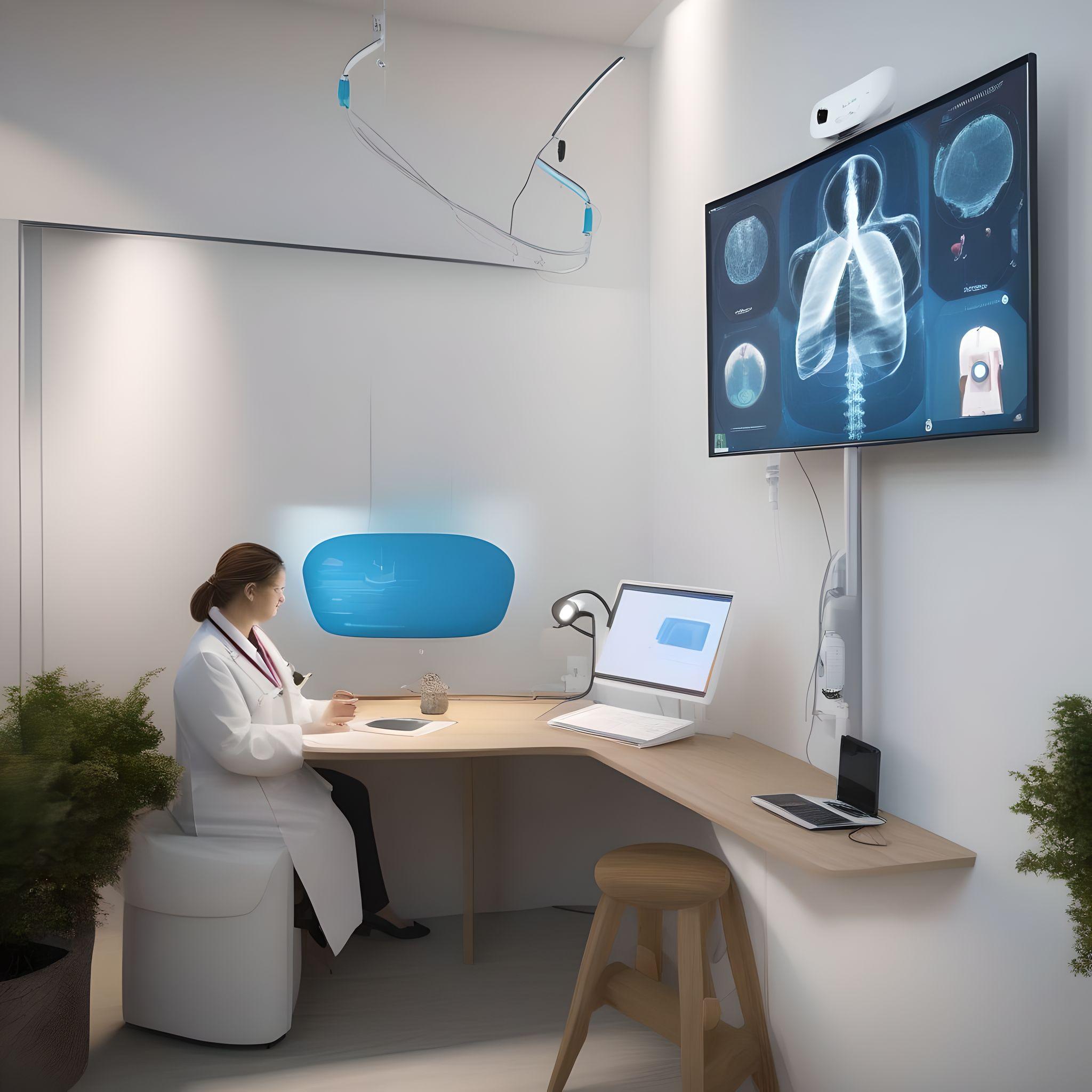In an era where digital innovation is transforming healthcare, telemedicine has emerged as a game-changer, providing medical services through remote communication technologies. The article “Effects and Effectiveness of Telemedicine” delves into the profound impact this technology has on the healthcare landscape, exploring both its benefits and challenges.
As the COVID-19 pandemic accelerated the adoption of telemedicine, studies have shown a staggering 154% increase in telehealth visits in the United States during the early months of the pandemic, underscoring its potential to revolutionize patient care and accessibility. This comprehensive analysis highlights how telemedicine enhances healthcare delivery by reducing geographical barriers, cutting down on patient wait times, and offering a cost-effective alternative to traditional in-person visits.
What Is Telemedicine?
Telemedicine is the practice of delivering medical care and consultation through digital communication technologies. This innovative approach allows healthcare providers to diagnose, treat, and monitor patients remotely using tools such as video conferencing, phone calls, and mobile apps.
Telemedicine facilitates access to medical services for individuals in remote or underserved areas, reduces the need for physical visits to healthcare facilities, and provides a convenient and efficient way to receive care. It encompasses a wide range of applications, including virtual consultations, remote monitoring of chronic conditions, mental health services, and follow-up appointments.
Effects And Effectiveness Of Telemedicine

Telemedicine has had a profound impact on healthcare, demonstrating both significant effects and high effectiveness across various dimensions. Here’s an overview of its effects and effectiveness:
Effects of Telemedicine
-
- Expanded Access to Care: Telemedicine has greatly expanded access to healthcare services, especially for individuals in rural or underserved areas. It provides a lifeline for patients who might otherwise face significant barriers to accessing medical care.
-
- Healthcare Cost Reduction: By minimizing the need for in-person visits, telemedicine reduces associated costs such as travel expenses, time off work, and childcare. This makes healthcare more affordable for patients.
-
- Improved Healthcare Delivery: Telemedicine enhances the efficiency of healthcare delivery by streamlining processes and reducing the burden on overextended healthcare systems. Providers can manage their time more effectively, seeing more patients in less time.
-
- Continuity of Care: Telemedicine ensures continuous care, particularly for patients with chronic conditions who require regular monitoring and follow-up. This consistent engagement helps in managing health conditions more effectively.
-
- Emergency Response and Crisis Management: During emergencies such as the COVID-19 pandemic, telemedicine proved invaluable. It enabled healthcare systems to continue functioning while reducing the risk of virus transmission by keeping patients out of crowded clinics and hospitals.
Effectiveness of Telemedicine
-
- High Patient Satisfaction: Numerous studies have shown high levels of patient satisfaction with telemedicine services. Patients appreciate the convenience, reduced travel time, and faster access to care.
-
- Quality of Care: Telemedicine has been found to be as effective as in-person consultations for many conditions. It is particularly effective for managing chronic diseases, mental health services, and routine follow-ups. Clinical outcomes in telemedicine are comparable to those of traditional face-to-face care.
-
- Enhanced Disease Management: Through remote monitoring and regular virtual check-ins, telemedicine allows for better management of chronic diseases like diabetes, hypertension, and heart disease. This proactive approach can prevent complications and hospitalizations.
-
- Timely Interventions: Telemedicine enables timely medical interventions, which are crucial for acute conditions. Patients can receive immediate consultation and treatment advice, which can be critical in preventing disease progression.
-
- Scalability and Flexibility: Telemedicine systems are highly scalable, allowing healthcare providers to expand their reach without the need for physical infrastructure. This flexibility makes it easier to adapt to varying patient volumes and needs.
What Are The Benefits Of Telemedicine?
Telemedicine offers numerous benefits that are transforming healthcare delivery. Here are some of the key advantages:
Increased Accessibility
Telemedicine breaks down geographical barriers, making it easier for people in remote or underserved areas to access quality healthcare. Patients can connect with specialists and receive medical advice without the need to travel long distances.
Convenience and Time Savings
Telemedicine allows patients to consult with healthcare providers from the comfort of their own homes, reducing the need for time-consuming and costly trips to the doctor’s office. This is particularly beneficial for individuals with mobility issues or those with busy schedules.
Cost-Effectiveness
By reducing the need for physical visits, telemedicine can lower healthcare costs for both patients and providers. It minimizes expenses related to transportation, hospital stays, and in-person appointments.
Improved Health Outcomes
Telemedicine enables continuous monitoring and follow-up care, which can lead to better management of chronic conditions and quicker intervention when issues arise. This ongoing care helps improve overall health outcomes.
Reduced Risk of Infection
Virtual consultations minimize the risk of spreading infectious diseases, a benefit that became particularly evident during the COVID-19 pandemic. Patients can receive care without exposing themselves or others to potential infections.
Read: Headache In The Elderly: Causes And Management
What Are The Challenges And Limitations Associated With Telemedicine?
These challenges and limitations include:
Technical and Infrastructure Barriers
Despite its benefits, telemedicine faces technical challenges, including internet connectivity issues and the need for compatible devices. These barriers can be particularly problematic in rural or low-income areas.
Privacy and Security Concerns
The use of telecommunication technologies raises concerns about the privacy and security of patient data. Ensuring compliance with regulations like HIPAA (Health Insurance Portability and Accountability Act) is crucial to protect sensitive information.
Regulatory and Legal Issues
The regulatory landscape for telemedicine is complex and varies by region. Providers must navigate different licensure requirements, reimbursement policies, and legal frameworks, which can hinder the widespread adoption of telehealth services.
Digital Divide
The digital divide refers to the gap between those who have access to modern information and communication technology and those who do not. This divide can limit the reach of telemedicine, particularly among elderly populations and those in low-income regions.
Telemedicine vs. Traditional Healthcare
Let’s compare telemedicine and traditional healthcare to analyze its effectiveness.
| Aspect | Telemedicine | Traditional Healthcare |
| Accessibility | Convenient, no travel needed | Requires travel to healthcare facilities |
| Quick access, shorter wait times | Longer wait times, especially for specialists | |
| Cost | More cost-effective | Higher costs due to infrastructure and travel |
| Reduces transportation and lost work hours | Additional expenses for travel and stays | |
| Quality of Care | Effective for routine care, follow-ups | Best for physical exams, diagnostics, and procedures |
| Limited by need for physical exams | Necessary for surgeries and emergencies | |
| Patient Experience | High satisfaction due to convenience | Personal, face-to-face interactions |
| No stress of travel and waiting rooms | Immediate physical assessments possible | |
| Tech Requirements | Requires internet and digital device usage | Less reliance on technology |
| Can be a barrier for some patients | More accessible for those uncomfortable with tech |
New Researches on Telemedicine

Recent research in telemedicine is uncovering new insights and innovations that continue to enhance its effectiveness and applicability. Here are some of the latest developments:
AI and Machine Learning Integration
-
- AI Diagnostics: Studies are exploring how artificial intelligence can assist in diagnosing diseases via telemedicine platforms, improving accuracy and speed.
-
- Predictive Analytics: Machine learning models are being developed to predict patient outcomes and identify those at risk of complications, enabling proactive care.
Remote Patient Monitoring
-
- Wearable Devices: Research is focusing on the use of wearables to continuously monitor vital signs, providing real-time data to healthcare providers.
-
- Chronic Disease Management: Telemedicine is being enhanced with remote monitoring tools to better manage conditions like diabetes, hypertension, and heart disease.
Telemedicine for Mental Health
-
- Telepsychology: Studies show the effectiveness of telemedicine in delivering psychological therapies, increasing access to mental health services.
-
- Digital Therapeutics: Research is being conducted on digital platforms that offer therapeutic interventions for conditions like depression and anxiety.
Virtual Reality (VR) and Augmented Reality (AR)
-
- VR Therapy: Investigations into VR for pain management and physical therapy show promising results in enhancing patient outcomes.
-
- AR in Surgery: AR is being used to assist in remote surgeries, providing real-time guidance and support to surgeons.
Telemedicine in Pediatrics
-
- Pediatric Consultations: Research indicates telemedicine’s effectiveness in managing pediatric conditions, providing parents with easier access to specialists.
-
- Remote Developmental Assessments: New methods are being developed for conducting developmental assessments of children via telemedicine.
Global Health Applications
-
- Telemedicine in Low-Resource Settings: Studies are exploring how telemedicine can bridge healthcare gaps in developing countries, improving access and outcomes.
-
- Cross-Border Consultations: Research into international telemedicine consultations is examining how to effectively deliver care across different healthcare systems.
Legal and Ethical Considerations
-
- Data Privacy: Ongoing research is addressing the challenges of ensuring patient data privacy and security in telemedicine platforms.
-
- Regulatory Frameworks: Studies are evaluating the effectiveness of different regulatory approaches to telemedicine, aiming to harmonize standards globally.
These new research areas are not only expanding the capabilities of telemedicine but also addressing some of its current limitations, paving the way for more integrated and comprehensive healthcare solutions.
Read: Regenerative Hearing Drug: A New Era In Treating Hearing Loss
Conclusion
Telemedicine has proven to be a game-changer in the healthcare industry, offering numerous benefits such as increased accessibility, cost savings, and improved patient engagement. Despite challenges like technical barriers and privacy concerns, the effectiveness of telemedicine in delivering quality healthcare is undeniable. As technology continues to evolve, the future of telemedicine looks promising, with the potential to reshape the way we access and receive medical care.
